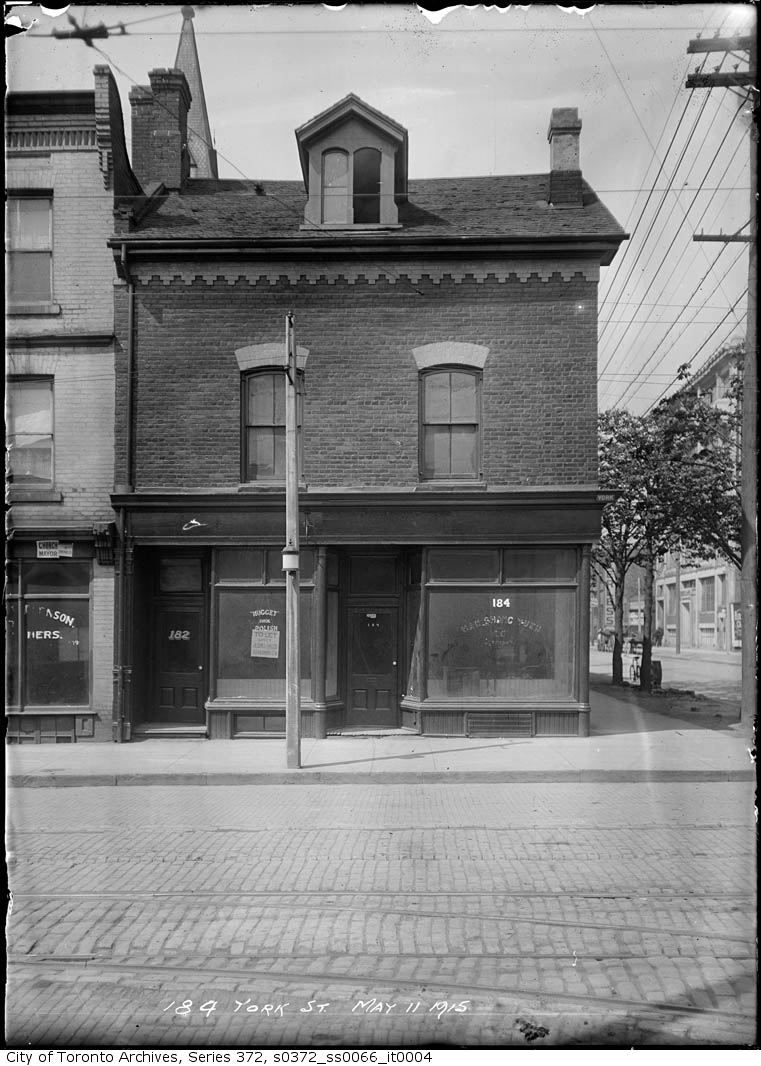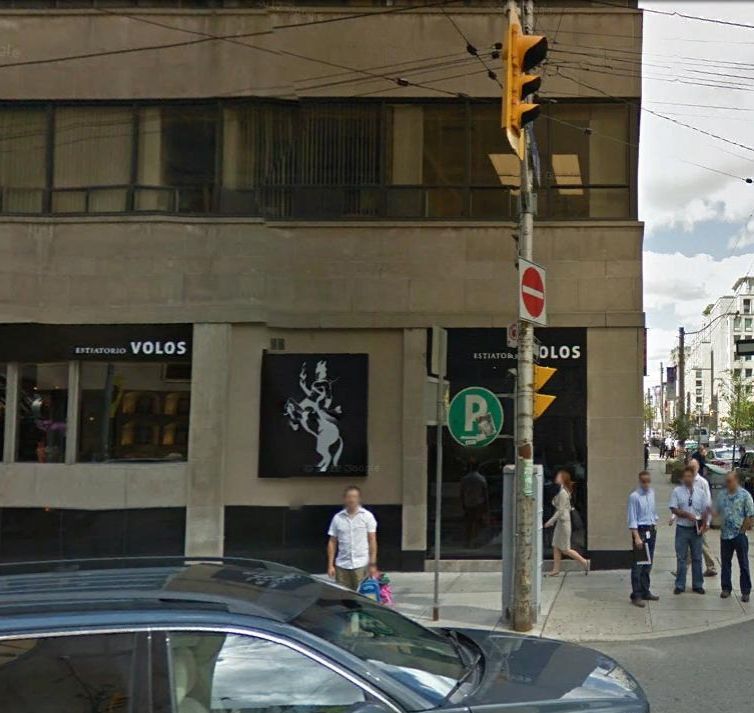tervan
New Member
search for grave of Stella VanZant
My last name is VanZant, and my family has told me of this story.
I have recently done some digging and came up with the following interesting Associated Press story dated Thursday December 4, 1952, which you can view in the National Library of Australia, at this URL. http://nla.gov.au/nla.news-article42763219[/B]
The article, which pre-dates the CIBC construction in 1969, talks about the building of an office tower by General Trust in 1911. While it was being constructed, it says they built a protective shed over the grave of Stella Vanzant, and construction went on around the shed. Amazing !
________________________________________________________________________
" LEFT SPACE FOR GIRL'S GRAVE
TORONTO--(A.P.)--There is a small place of ground in the crowded heart of the city untouched by the giant commercial buildings that surround it
The plot, 12 feet by 14 feet, is dominated by the Bank of Commerce, tallest building in the commonwealth, and lies next to Toronto General Trust Building.
Beneath the pavement of the courtyard of the trust building is the grave of a girl, Stella Vanzant daughter of one of Toronto's pioneers, John Vanzant who came from New York about 1778.
As was the custom in those days, the child was buried in the garden. First record of the grave appeared in a deed registered in 1815. But there has been no apparent transfer of land in which it lies from the Vanzant family to other owners.
The grave is protected by an honorable agreement. In 1911, when the first part of the General Trust Building was erected, the company agreed to hold the plot containing the grave inviolate and, in 1928 when an addition was made, the agreement was observed.
A protective shed was built over the grave and construction went on around the shed. Mrs. Gerald Johnson of Toronto, a descendant of John Vanzant, knows of the family legend.The pioneer was of Dutch ex-traction and his family had helped found New Amsterdam on the Hudson River.
He arrived when Toronto was a fur-trading post. Later he established a tannery at the corner of the present Adelaide and Yonge streets, some 10 years before the future town plot of York was surveyed. Actual settlement of the area was delayed until 1793, so John Vanzant was one of the first to live there. York later became part of Toronto.The Vanzants left Toronto and returned to the United States when the Mackenzie rebellion broke out in 1837. Mrs. Johnson believes the tannery and Vanzant's residence a block away may have passed into the hands of Jesse Ketchum. philanthropist and reformer. The family returned to Canada about 1850 and some of its members settled in the Markham district. "
________________________________________________________________________
The Toronto General Trusts Building was on the east side of Bay Street, south of King Street at the north-east corner of Bay/Melinda.
Note: Melinda Street now ends at Jordan St; it does not go west to Bay St. Likewise, Jordan St no longer goes south to Wellington; it ends at Melinda.

To build Commerce Court, CIBC tore down most of the existing buildings on the site between King-Wellington and Yonge-Bay; a notable exception was their own bank building at King/Jordan which is now known as Commerce Court North. Included in the large tract that was demolished were the General Trust Buildings of 1911 and 1928, where it is said that Stella was buried in 1814. Construction of the Commerce Court complex was halted while they searched for the missing remains of Stella.

I also found the following on the internet:
A book - "Unbuilt Toronto: A History of the City That Might Have Been" - written in 2008 by Mark Osbaldeston, states:
"In 1969, in an effort to find the gravesite, the bank undertook an archeological dig, supervised by Mount Pleasant Cemetery, the provincial government, and the Anglican Church. After hand-digging to a depth of twelve feet without any sign of Stella's remains, all parties agreed that further searching would be futile. Construction could begin in earnest on Commerce Court."
=========================================================================
The York U. Archive gives no further info regarding this mysterious photo.
A brief search of Google did not assist with the key words, 'Stella Vanzant.'
Perhaps another of our viewers will know the story.
It's a fine mystery!
My last name is VanZant, and my family has told me of this story.
I have recently done some digging and came up with the following interesting Associated Press story dated Thursday December 4, 1952, which you can view in the National Library of Australia, at this URL. http://nla.gov.au/nla.news-article42763219[/B]
The article, which pre-dates the CIBC construction in 1969, talks about the building of an office tower by General Trust in 1911. While it was being constructed, it says they built a protective shed over the grave of Stella Vanzant, and construction went on around the shed. Amazing !
________________________________________________________________________
" LEFT SPACE FOR GIRL'S GRAVE
TORONTO--(A.P.)--There is a small place of ground in the crowded heart of the city untouched by the giant commercial buildings that surround it
The plot, 12 feet by 14 feet, is dominated by the Bank of Commerce, tallest building in the commonwealth, and lies next to Toronto General Trust Building.
Beneath the pavement of the courtyard of the trust building is the grave of a girl, Stella Vanzant daughter of one of Toronto's pioneers, John Vanzant who came from New York about 1778.
As was the custom in those days, the child was buried in the garden. First record of the grave appeared in a deed registered in 1815. But there has been no apparent transfer of land in which it lies from the Vanzant family to other owners.
The grave is protected by an honorable agreement. In 1911, when the first part of the General Trust Building was erected, the company agreed to hold the plot containing the grave inviolate and, in 1928 when an addition was made, the agreement was observed.
A protective shed was built over the grave and construction went on around the shed. Mrs. Gerald Johnson of Toronto, a descendant of John Vanzant, knows of the family legend.The pioneer was of Dutch ex-traction and his family had helped found New Amsterdam on the Hudson River.
He arrived when Toronto was a fur-trading post. Later he established a tannery at the corner of the present Adelaide and Yonge streets, some 10 years before the future town plot of York was surveyed. Actual settlement of the area was delayed until 1793, so John Vanzant was one of the first to live there. York later became part of Toronto.The Vanzants left Toronto and returned to the United States when the Mackenzie rebellion broke out in 1837. Mrs. Johnson believes the tannery and Vanzant's residence a block away may have passed into the hands of Jesse Ketchum. philanthropist and reformer. The family returned to Canada about 1850 and some of its members settled in the Markham district. "
________________________________________________________________________
The Toronto General Trusts Building was on the east side of Bay Street, south of King Street at the north-east corner of Bay/Melinda.
Note: Melinda Street now ends at Jordan St; it does not go west to Bay St. Likewise, Jordan St no longer goes south to Wellington; it ends at Melinda.
To build Commerce Court, CIBC tore down most of the existing buildings on the site between King-Wellington and Yonge-Bay; a notable exception was their own bank building at King/Jordan which is now known as Commerce Court North. Included in the large tract that was demolished were the General Trust Buildings of 1911 and 1928, where it is said that Stella was buried in 1814. Construction of the Commerce Court complex was halted while they searched for the missing remains of Stella.
I also found the following on the internet:
A book - "Unbuilt Toronto: A History of the City That Might Have Been" - written in 2008 by Mark Osbaldeston, states:
"In 1969, in an effort to find the gravesite, the bank undertook an archeological dig, supervised by Mount Pleasant Cemetery, the provincial government, and the Anglican Church. After hand-digging to a depth of twelve feet without any sign of Stella's remains, all parties agreed that further searching would be futile. Construction could begin in earnest on Commerce Court."














